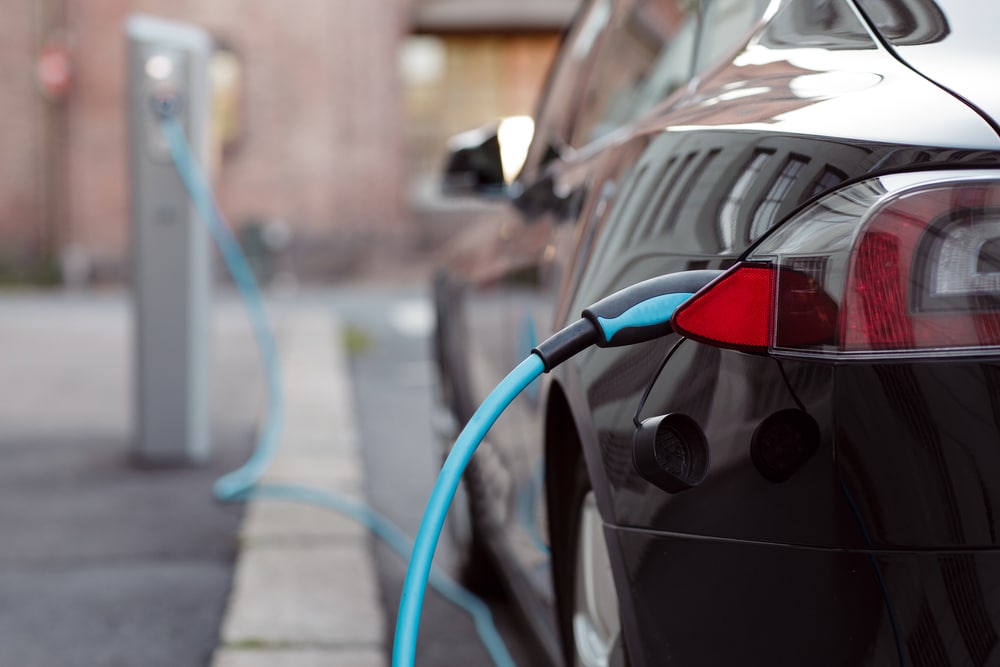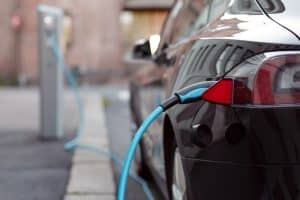
- The Savvy Promise
At Savvy, our mission is to empower you to make informed financial choices. While we maintain stringent editorial standards, this article may include mentions of products offered by our partners. Here’s how we generate income.
With large distances to contend with and limited alternatives available, owning a car is often a necessity in Australia. However, with concerns growing about climate change, many Aussies are looking for ways to reduce their environmental impact – and that includes the vehicles they drive. This guide delves into the world of green cars in Australia, exploring the different types of eco-friendly vehicles and what to consider when making your choice.
Defining “green”: a spectrum of eco-friendly cars
There's no single definition of a “green car”, but it generally refers to a vehicle with a lower environmental impact compared to a traditional petrol-powered car. Here's a breakdown of the main options available in Australia:
- Electric vehicles (EVs): these are cars that produce zero tailpipe emissions as they run entirely on electricity. They offer a silent and smooth driving experience, and with advancements in battery technology, their range is constantly improving.
- Hydrogen fuel cell vehicles: these vehicles are powered by electricity generated from a chemical reaction between hydrogen fuel and oxygen in the car's fuel cell. They produce zero tailpipe emissions, similar to EVs, but offer the advantage of faster refuelling times compared to battery charging. However, hydrogen refuelling infrastructure is still limited in Australia.
- Hybrid vehicles: hybrids combine an electric motor with a petrol or diesel engine. They typically achieve better fuel efficiency than traditional cars, especially in stop-and-go city traffic. The electric motor assists the fuel engine during acceleration and can power the car for short distances at low speeds.
- Fuel-efficient petrol cars: while not emission-free, significant advancements have been made in engine technology. Some petrol cars now achieve impressive fuel economy figures, with a much lower environmental impact compared to older models.
Matching your green car to your needs
Choosing the right green car depends on your specific needs and driving habits. Here are some key questions to consider:
- Driving range: how far do you typically drive on a daily basis? EVs are excellent for shorter commutes, while hybrids offer a good balance between electric and fuel power for longer journeys. If your driving habits are unpredictable, a fuel-efficient petrol car might be a more practical option.
- Charging infrastructure: if considering an EV or hybrid, assess your access to charging stations at home and work. Having a dedicated charging point at home is ideal for convenient overnight charging. Public charging infrastructure is expanding rapidly, but it's still important to factor in availability in your area.
- Upfront cost vs. long-term savings: generally, EVs have a higher upfront cost compared to fuel cars. However, lower running costs can help offset this over time. Hybrids typically fall somewhere in between EVs and petrol cars in terms of purchase price.
- Environmental impact: while all the options here offer reduced environmental impact compared to standard fossil fuel cars, EVs boast zero tailpipe emissions, making them the greenest choice. Hybrids still produce emissions when running on fuel, but they offer significant improvements over traditional models.
Researching your green options
Here are some valuable resources to help you navigate the world of eco-friendly vehicles in Australia:
- The Green Vehicle Guide: the Green Vehicle Guide is an Australian Government resource that provides drivers with tools to compare car models. You can search for vehicles based on various criteria, including fuel consumption, emissions, running costs and safety ratings.
- Car manufacturer websites: each car manufacturer website showcases its electric and hybrid car models, highlighting features and specifications. Browsing these websites can give you a better understanding of the range of green vehicles available and narrow down your options based on your budget and desired features.
- Car review websites: independent car review websites provide in-depth reviews and comparisons of electric and hybrid cars. Look for reviews that specifically consider the environmental aspects of different vehicles, focusing on factors like real-world fuel efficiency and battery range for EVs.
- Car dealerships: many dealerships now have dedicated sections for their electric and hybrid models. Visiting a dealership allows you to get a closer look at the vehicles, ask questions from knowledgeable sales staff and potentially schedule a test drive.
Making the most of government incentives
Depending on where you live in Australia, you may be able to benefit from incentives for EVs and zero-emission vehicles.
- Queensland offers the largest EV subsidy in Australia, with rebates of up to $6,000 on eligible cars purchased on or after 21 April 2023.
- The Northern Territory offers EV and plug-in hybrid owners free registration and a stamp duty concession of up to $1,500 from 1 July 2022 until 30 June 2027.
- Western Australia’s Zero Emission Vehicle (ZEV) Rebate Scheme offers a rebate of $3,500 for eligible EVs or hydrogen vehicles on the first 10,000 vehicles registered in the state or up to 10 May 2025, whichever is first.
- The ACT offers incentives for zero-emissions vehicles, including no stamp duty, free registration and tax exemptions.
- Tasmania’s Electric Vehicle Rebate program provides $2,000 for new EVs and second-hand (but ‘new to Tasmania’) EVs, with a total of 375 rebates available.
- South Australia’s subsidy scheme, which offered a $3,000 subsidy on new battery and hydrogen fuel cell vehicles, closed on 1 January 2024. However, a three-year registration exemption for eligible vehicles remains in place.
- New South Wales’s Electric Vehicle Strategy, which allowed NSW residents to apply for a $3,000 rebate for eligible EV purchases, ended on 1 January 2024.
- Victoria’s Zero Emissions Vehicle Subsidy Program was the first in Australia, but is now closed to new applicants.
Financing your eco-friendly ride
Once you've narrowed down your options, it's time to explore financing. If you are buying an EV or hybrid car, you may be able to take out a green car loan. These loans can offer several advantages:
- Lower interest rates: in recognition of the environmental benefits of green cars, lenders may offer lower interest rates on green car loans compared to standard car loans. This can translate to significant savings over the life of the loan.
- Longer loan terms: some lenders may offer extended loan terms for green car loans, allowing you to spread the cost of your eco-friendly car purchase over a longer period, potentially making the monthly repayments more manageable.
- Flexible features: many loans offer flexible repayment options and the ability to make additional repayments without penalty. This allows you to tailor the loan to your financial situation and potentially pay it off sooner.
However, it is important to keep in mind:
- Eligibility: some lenders might have specific eligibility requirements, such as the minimum model year of the car or the type of alternative fuel technology (e.g. electric vs. hybrid). Be sure to check the eligibility criteria before applying.
- Interest rates and fees: compare interest rates and fees from different lenders to find the most competitive green car loan option. Don't just focus on the headline interest rate; consider the annual percentage rate (APR), which includes all loan fees, to get a true picture of the overall cost of borrowing.
- Loan features: choose a green car loan with features that suit your needs. Look for flexible repayment options, the ability to make additional repayments and clear terms regarding early settlement fees.
Alternatively, you could consider a traditional car loan to finance your purchase, a novated lease or paying with cash.
Green driving habits for a sustainable future
Even after switching to an eco-friendly car there are steps you can take to further reduce the environmental impact of driving:
- Practice eco-driving: techniques like smooth acceleration, maintaining a steady speed and anticipating traffic lights can significantly improve fuel efficiency.
- Plan your trips: by combining errands and planning efficient routes, you can minimise unnecessary driving and maximise the efficiency of each trip.
- Maintain your vehicle: regularly scheduled maintenance keeps your car running smoothly and efficiently. A well-maintained car produces fewer emissions and optimises fuel use.
- Consider public transport and carpooling: for shorter trips or commutes, explore the use of public transport, cycling or walking. Carpooling with colleagues or friends can also help reduce the number of cars on the road.
Buying an eco-friendly car in Australia involves considering various factors so you can make an informed decision that aligns with your environmental values and lifestyle preferences. Once you've identified the right green car for you, the next step is to explore financing options. At Savvy, we understand the importance of finding the right loan to support your eco-friendly vehicle purchase. We can search offers from more than 40 lenders to help you find a car loan to suit your needs. Get started today.
Did you find this page helpful?
This guide provides general information and does not consider your individual needs, finances or objectives. We do not make any recommendation or suggestion about which product is best for you based on your specific situation and we do not compare all companies in the market, or all products offered by all companies. It’s always important to consider whether professional financial, legal or taxation advice is appropriate for you before choosing or purchasing a financial product.
The content on our website is produced by experts in the field of finance and reviewed as part of our editorial guidelines. We endeavour to keep all information across our site updated with accurate information.
Approval for car loans is always subject to our lender’s terms, conditions and qualification criteria. Lenders will undertake a credit check in line with responsible lending obligations to help determine whether you’re in a position to take on the loan you’re applying for.
The interest rate, comparison rate, fees and monthly repayments will depend on factors specific to your profile, such as your financial situation, as well others, such as the loan’s size and your chosen repayment term. Costs such as broker fees, redraw fees or early repayment fees, and cost savings such as fee waivers, aren’t included in the comparison rate but may influence the cost of the loan. Different terms, fees or other loan amounts may result in a different comparison rate.









